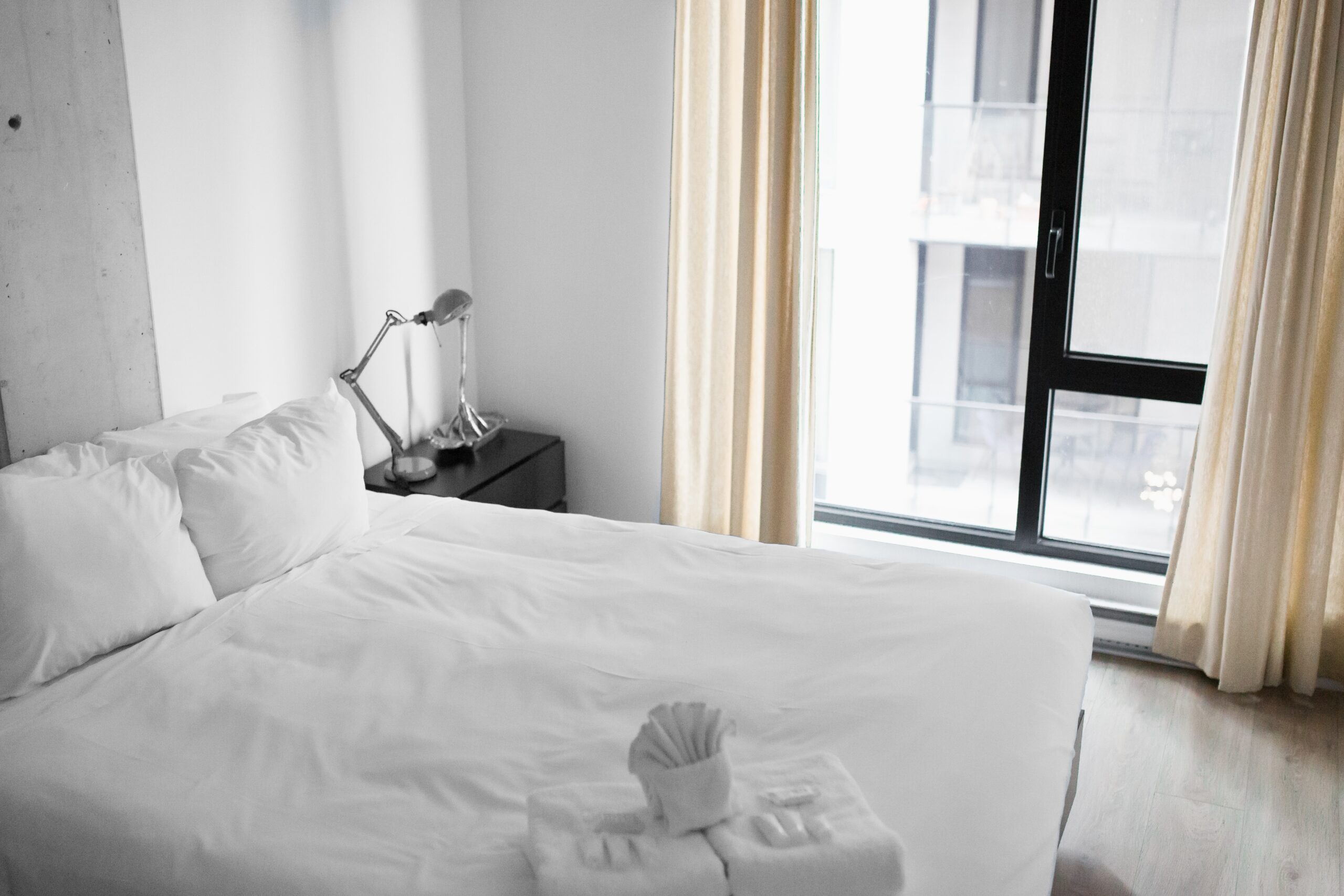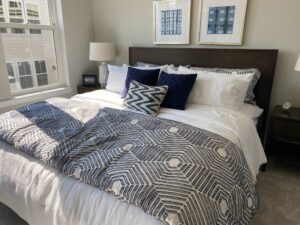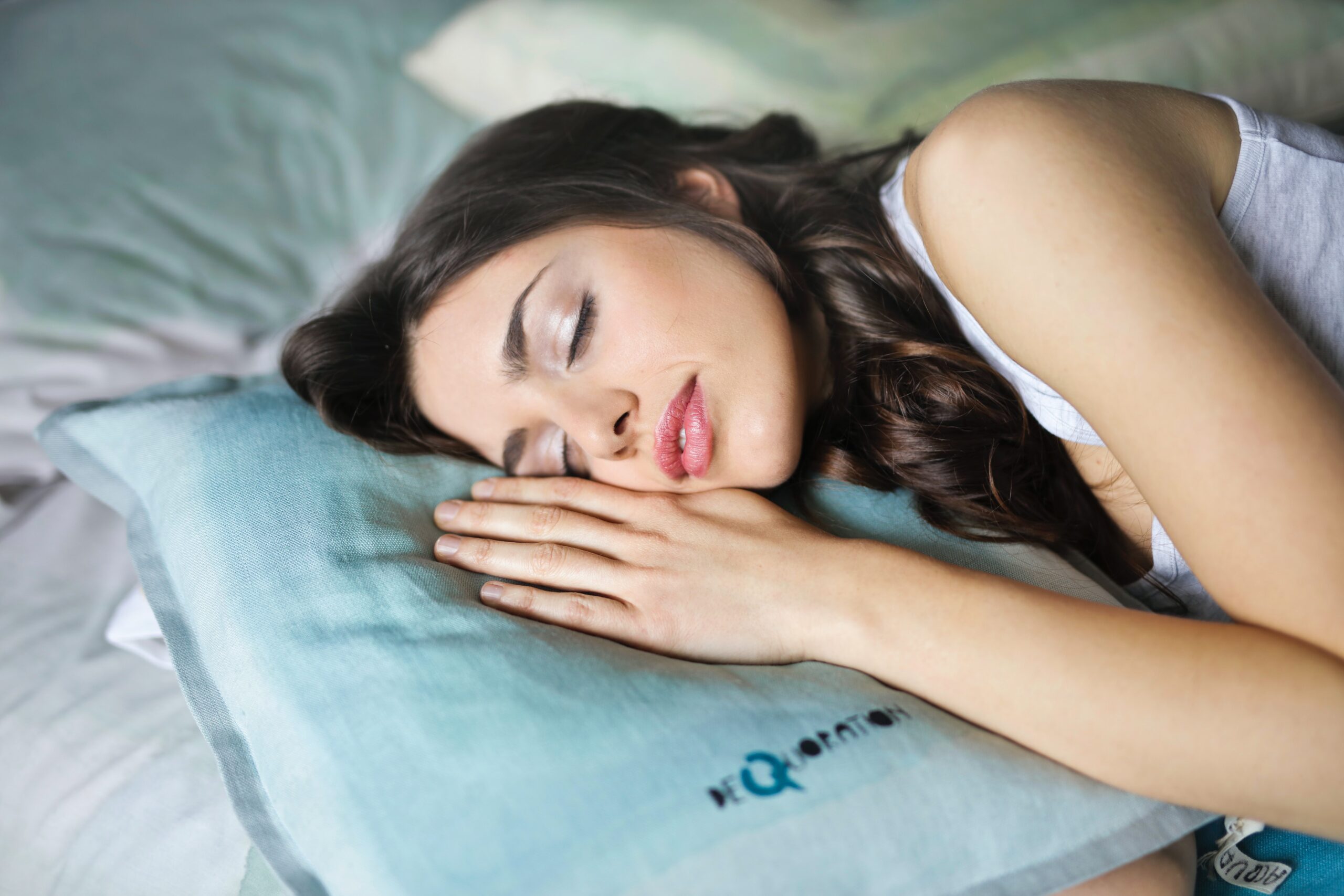Each of us sleeps eight hours out of twenty-four hours. That is, the average age of sixty years, we sleep for twenty years. When we buy a nice house to live in and an expensive car to travel in, we should arrange good bedding for our sleep. Here the question arises what is bedding?
What is bedding?
When a person comes home from the fatigue of the day’s work and travel, only his bedroom gives him peace. While the most comfortable thing in the entire bedroom is its bed. And what if the bed is decorated with soothing colors and soft pillows? Your comfortable bed is ready to give you a long and restful sleep.
The cute aesthetic bed sheets, bedclothes, blankets, pillows, and other parts of the bed accessories that individuals use to cover and safeguard their mattresses are referred to as bedding. Mattress covers, fitted and flat sheets, pillowcases, aesthetic bed comforters, shams, quilts, and bed skirts are examples of different types of bedding. You can buy bed covers separately or as a whole bedding set, such as a comforter set (comprising of a comforter, a sham, a bed skirt, and toss pillows) or a sheet set (a fitted sheet, flat sheet, and two pillowcases). Bedding is crucial because it can improve sleep quality, regulate body temperature, preserve your mattress, and encourage excellent cleanliness.
Does bedding affect sleep?
A good night’s sleep can be enhanced by using the appropriate sheets, but using the wrong ones can impair the quality of your sleep. The sheet material affects the rest in a variety of ways, including the following:
- It has a high capacity for intensity. Some people have a tendency to become overheated while sleeping in the evening, which results in excessive sweating and dehydration. Being too warm when you sleep can cause you to thrash around in search of comfort or consume more liquids to control your body heat, bringing on a variety of unpleasant side effects.
- It could irritate your skin. Bedsheets that are too rough or made with harsh synthetic fibers might irritate your skin or aggravate pre-existing skin disorders, making it difficult for you to calm down and unwind in the evening.
- You can’t stay warm with it. While nighttime warming may be a problem for some, the virus may affect some people more easily. If you use too many breathable materials, you can find yourself trying to stay warm at night, which will result in worse quality sleep.
- The warm climate is a significant variable that influences human rest since rest guideline is firmly connected to thermoregulation. For example, rest beginning is typically started by a reduction in center internal heat level (Tc) and an expansion in skin temperature (Tsk) distally for intensity to be scattered from the center to the climate through the fringe yielding an ascent in distal-proximal temperature slope (DPG).
- Warm climate including temperature, dampness, and velocity impacts sleep. Particularly, chilly openness fundamentally expanded wake after rest beginning (WASO) and stage 1 rest (N1) and diminished stage 2 (N2) and fast eye development (REM) rest in semi-naked members potentially due to modified thermoregulatory systems.
- A hypothetical report on the warm solace model in the resting climate affirmed that protection given by sleepwear and bedding keeps up with warm solace during rest.
Is bedding fashion for bed?
We invest a ton of energy in the first part of the day preparing for the afternoon. We wash up, put on cosmetics, blow dry our hair, and put on the perfect outfit we feel significantly better in. Then we finish it off with the hot shades of embellishments from shades to shoes – the subtleties of what we wear matter by the way we look and feel. Perhaps it ought not to be like that, however, it is. You can consider your bedding design for the room since you dress your bed similarly as attire and extras dress your body. The little subtleties we put in our rooms, for example, rare cloth floor coverings, beaded lampshades, hand-sewed pillowcases, or silk sheets will have a significant effect on how we feel as we invest energy in our rooms.
In the event that you are confounded about where to start with regards to beautifying the room or different pieces of the house, follow the outside. Stand at one of the windows from inside a room and post. What do you see occurring on your terrace? Do you have a blue pool or is your nursery loaded up with yellow marigolds? Does your grass seem to be green velvet or do you have natural conceals from rocks and stone? Do you adore the cool strength of dark-fashioned iron porch furniture or do you incline toward strong shade stripes? You can start to find out about how the within can mirror the outside or tight clamp versa.
You believe that your entire family should feel as good in their rooms as you do. On the off chance that you focus on subtleties of bed cloths, variety, goods, and little private contacts for your child’s rooms, they will feel like they are exceptional, and they might try and tidy up the room somewhat more frequently. For instance, your child’s bedding could look charming and cuddly, and the tones and examples for youngsters can be splendid, fun, and eccentric. It doesn’t make any difference what size of the sleeping cushion you or your children have, the beddings should all bear the cost of solace. The objective of each and every room is to have materials that are wonderful, simple to deal with, and beddings that are agreeable to rest on. Assuming the room is dressed right, you will feel far better while you are in it.
Types of bedding:
Anyone who has never shopped for bedding before may find the process intimidating, especially those who are unaware of the variations in bedding. There are numerous kinds of pillows, bed covers, and sheets. Additionally, these things are available in a vast array of colors, patterns, and sizes. Understanding the meanings of common bedding terminology, such as duvets, comforters, and bed covers can be quite helpful in this regard. There are various kinds of bedding that are used by many individuals for both functional and aesthetic reasons. Typical types of bedding include:
Blanket:
A blanket is a long, woven piece of soft cloth that is frequently used as a bed covering. is suitable for use alone or with a blanket, comforter, or duvet that is more aesthetically pleasing on top. There are many different fabric kinds for blankets, such as microfiber (a polyester and nylon combination), wool, polyester, satin, and other synthetic fabrics. Wool, polyester, cotton, microfiber soft, or a combination of fibers are the most popular blanket fabrics.
Bedspread:
A bedspread is a stylish bed cover that tops off the rest of the bedding. People who wish to shield their bedding from contaminants like dust or scents will find awesome bed sheets are bedspreads handy.
Bed skirt:
A bed skirt is a piece of fabric that runs from the bottom of the bed frame to the floor and can be used to opulently conceal box springs or storage space.
Duvet: 
A comforter is just a thicker form of a duvet. It is a supple cloth bag stuffed with artificial or down feathers. A duvet cover is typically purchased for aesthetic or protective reasons.
Coverlet:
A coverlet is a type of bed covering with an ornamental woven pattern. Which is a type of fabric covering that often does not extend to the floor or cover the cushions. On top of bedspreads, it is frequently used as a decorative item. Coverlets are frequently used as foot runners at the foot of beds in hotel rooms. It normally hangs just low enough to cover the bottom of the bed and does not completely encircle the mattress.
Comforter:
A comforter is a padded blanket that is slightly thicker than the other bedding and is placed on top of it to provide additional warmth. It is a bed cover that is stuffed with down or fibers. While many people choose to choose down comforters for these kinds of bedding, there are also down substitutes, such as rayon or polyester. In North America, this bed topper may be the most popular. Comforters are among the best bedroom design items because of their wide variety of styles, patterns, and colors. Two of the most popular fabrics for comforters are cotton and polyester.
Flat sheets: 
Flat sheets, also known as top sheets, are sheets that go over fitted sheets, leaving the top end open. In warm weather, this thin sheet can be used as a light blanket.
Fitted sheet:
A fitted sheet, also known as a bottom sheet, is a type of bedding that fits tightly around the mattress (or mattress covering). They are available in deep pocket versions for wider mattresses.
Quilts:
A quilt is a quilted blanket that is flatter than a comforter and sits closer to the bed. A quilt can be used as a blanket, but it will not be as warm as its fluffier comforter cousins.
Mattress cover:
A mattress cover encases the mattress, protecting it from dust mites, spills, bed bugs & mold, and even regulating temperature. Choosing a hypoallergenic mattress cover is ideal for allergy sufferers because it can help protect against allergens. Mattress covers aid in the removal of excess body soil and sweat from your mattress.
Types of Pillows:
Bolster Pillows:
A bolster pillow is a tube-shaped pillow that is used to support the lower back, particularly when sitting up in bed. Having said that, it can also be used as a decorative pillow. Bolster pillows can range in size from very small to very long and wide.
Sleeping Pillows:
A sleeping pillow is a standard, rectangular pillow that you use while sleeping. Sleeping pillows are available in three different sizes: standard, queen, and king. Of course, there are different types of sleeping pillows to choose from.
Euro or Continental Pillows:
A Euro pillow, also known as a continental pillow, is a large square pillow that is typically placed against the headboard. The cover is removable for washing.
Pillow Shams:
A pillow sham is a decorative pillow cover. It is frequently embellished with ruffles, trims, flanges, and cording.
Bedding Buying Guidelines:
When it comes to bed setup, try to find the highest quality option within your budget because bedding can have a significant impact on your sleep quality. Many factors can have an impact on your bedding purchase, including:
Breathability:
When shopping for new bedding, keep your preferred sleeping temperature in mind. If you sleep hot, invest in more breathable fabrics. If you’re prone to nighttime chilliness, you might want to include at least one synthetic layer to help trap some body heat.
Comfort:
The material and weave of the fabric used to make bedding can influence how comfortable it feels. Thread counts range from 100 to 1,000 woven threads per square inch of fabric. Generally, the higher the thread count, the softer the sheet. Because the weaving is looser, the numbers in the lower range may feel coarser. High thread count sheets, on the other hand, are usually more expensive and don’t always equate to quality, as some manufacturers inflate the number to sell it at a higher price point. For the best results, experts recommend bedding with a thread count of 200-400.
Quality:
It may be tempting to buy a cheap, visually appealing sheet set, but investing in your bedding can improve the quality of your sleep and benefit your health in the long run by providing a more comfortable place to sleep.
Hypoallergenic:
Antimicrobial bedding may benefit allergy sufferers. You can get a better night’s sleep by using materials that are naturally resistant to dust mites and mold.

